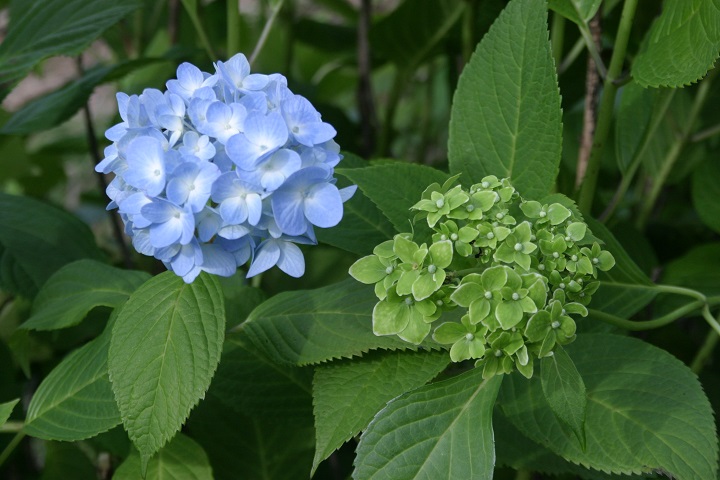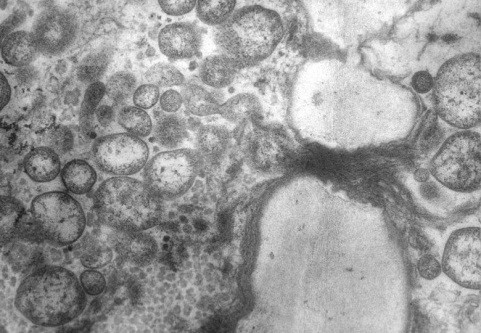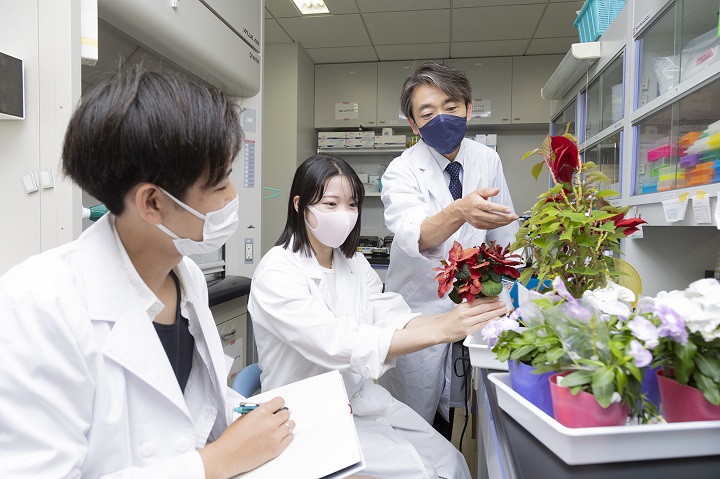reseach
Exploring the Mechanism of Life to Protect Plants from Disease
Kenro Oshima, Professor
Department of Clinical Plant Science, Faculty of Bioscience and Applied Chemistry
Posted Oct.28,2022
Faculty Profile
Professor Kenro Oshima studies pathogenic phytoplasma, which interferes with plant growth. He is engaging in efforts to protect plants from disease, looking toward a future in which plants are linked to food and energy issues.
Study on phytoplasmas that trigger unique diseases
I am researching plant diseases to protect plant health.
Pathogens that infect plants include a wide variety of microorganisms such as fungi including molds, bacteria, and virus. Among them, I am particularly interested in the bacteria called phytoplasma.
Phytoplasmas are parasitic in plant cells that alter plant properties and prevent normal growth. Symptoms vary depending on the type of plant infected. In a disease called “hydrangea phyllody,” which affects its namesake flower, infected plants show symptoms*1 such as the flowers turning leafy green and buds poking through the flower core.
Perhaps the most unique example is the poinsettia that is commonly seen during the Christmas season. The poinsettia is thought of a small-sized foliage plant with dense red flowers. However, it is actually a tree that grows to several meters in height. Phytoplasma infection has caused the development of "witch's broom," a dense growth of stems and branches that changed the appearance of the plant.
However, such cases of infection that add value to the plant are rare. Many plants infected with phytoplasma show signs of disease, such as severe shriveling and failure to grow fruit. Such diseases have thus been causing damage to agriculture around the world.
It is estimated that the amount of plants lost to disease is more than 12% of total potential food production, or enough to feed about 900 million people. I believe that preventing plant diseases and helping plants grow healthy will help solve many of the world's problems, not only in terms of food supply, but also in terms of promoting the use of biofuels.
Unfortunately, however, measures to combat phytoplasma infection have not yet been established. It is known that antibiotics have shown some efficacy in alleviating the symptoms. But they are not suitable for use on edible plants, due to their effects on humans. I am trying to find treatments that do not negatively impact the environment by helping plants increase their own resistance to infection, or plant immunity.
*1. A phenomenon in which microbial parasites cause a plant disease, resulting in local or generalized abnormalities.

The hydrangea turned green due to hydrangea phyllody (right). Currently, there is no cure, and the only way to cope with the disease is to cut down and dispose of infected plants to eliminate the possibility of spreading the infection through insects.
Approaching the roots of "life" through research on plant diseases
I became interested in microorganisms due to the influence of my father, who was studying bacteria, so I started a career as a researcher.
When I first began my studies, I majored in agricultural chemistry to study microorganisms useful to humans such as yeast, which is essential for the production of sake and seasonings. Later, I became involved in research on plant diseases under a plant pathologist, Professor Shigetou Namba of the University of Tokyo. I came across phytoplasma through the research work.
To protect plant health, it is important to understand the mechanism of infection and to come up with approaches that will lead to prevention and treatment. However, phytoplasmas were difficult microorganisms to study, because they could not be artificially cultivated. It took more than 30 years from the discovery of their existence by the late Professor Emeritus Yoji Doi of the University of Tokyo and others in 1967 to the world's first successful deciphering of its genome*2 by Professor Namba in 2004.
When the mechanism was revealed, phytoplasma was a mysterious bacterium with few metabolic genes. It was an "ultimate slacker" which produced little life energy on its own and depended on its host to survive. Moreover, it did not even possess ATP synthase, an element that was thought to be essential for living organisms. I was surprised to see an instance of ecology that overturned the common consensus on what it takes to be an organism, and the discovery raised questions on what life is all about. I hope to continue to work on this question through the study of plant diseases.
*2. A term that indicates all the genetic information indicated by the DNA (deoxyribonucleic acid) sequence in the cells of an organism.

An electron microscope view of phytoplasmas infecting a plant's phloem. Each tiny particle is a cell of phytoplasma.
Providing interactive classes using the chat function
There are still very few universities that have an undergraduate program specializing in researching plant diseases. So I am very grateful to Hosei University for providing us with a supportive environment.
In particular, the Department of Clinical Plant Science operates shared laboratories and greenhouses, which naturally encourages open interaction among laboratories, creating positive stimulus for the entire department.
Although classes were held online due to the spread of COVID-19, the convenience of the chat function was beneficial. It was a nice surprise to see a rapid increase in questions from the students. The classes became lively with interactive exchanges of questions, and I answered questions sent from the students. Since I liked this trend, I plan to continue to offer both face-to-face and online class participation, and to accept not only questions but also feedback on the classes using the chat function.
The academic world stands on a foundation that has been built by numerous researchers who brought their wisdom to it. The knowledge accumulated by our predecessors truly supports us as “practical wisdom.” I would like to pass it on to my students and society hoping, that it will be useful in the future.

Professor Oshima looks with warmth at plants and students. In the laboratory, he emphasizes communication and pays attention to each student while teaching them.
Kenro Oshima, Professor
Department of Clinical Plant Science, Faculty of Bioscience and Applied Chemistry
Born in Tokyo in 1969. Graduated from the Department of Applied Agricultural Chemistry, Faculty of Agriculture, the University of Tokyo, and completed the doctoral program at the Graduate School of Agricultural and Life Sciences of the same university. Doctor of Agriculture. After serving as a dispatched researcher at Bio-oriented Technology Research Advancement Institution, special researcher at Japan Society for the Promotion of Science, agri-bio informatics assistant at Graduate School of Agricultural and Life Sciences, the University of Tokyo, and specially appointed assistant professor and associate professor at Department of Agricultural and Environmental Biology, Graduate School of Agricultural and Life Sciences, the University of Tokyo, he was appointed to his current position as a professor of the Department of Clinical Plant Science, Faculty of Bioscience and Applied Chemistry, Hosei University in 2014. He is also a councilor of the Phytopathological Society of Japan and a board member of the Japanese Society of Mycoplasmology.

